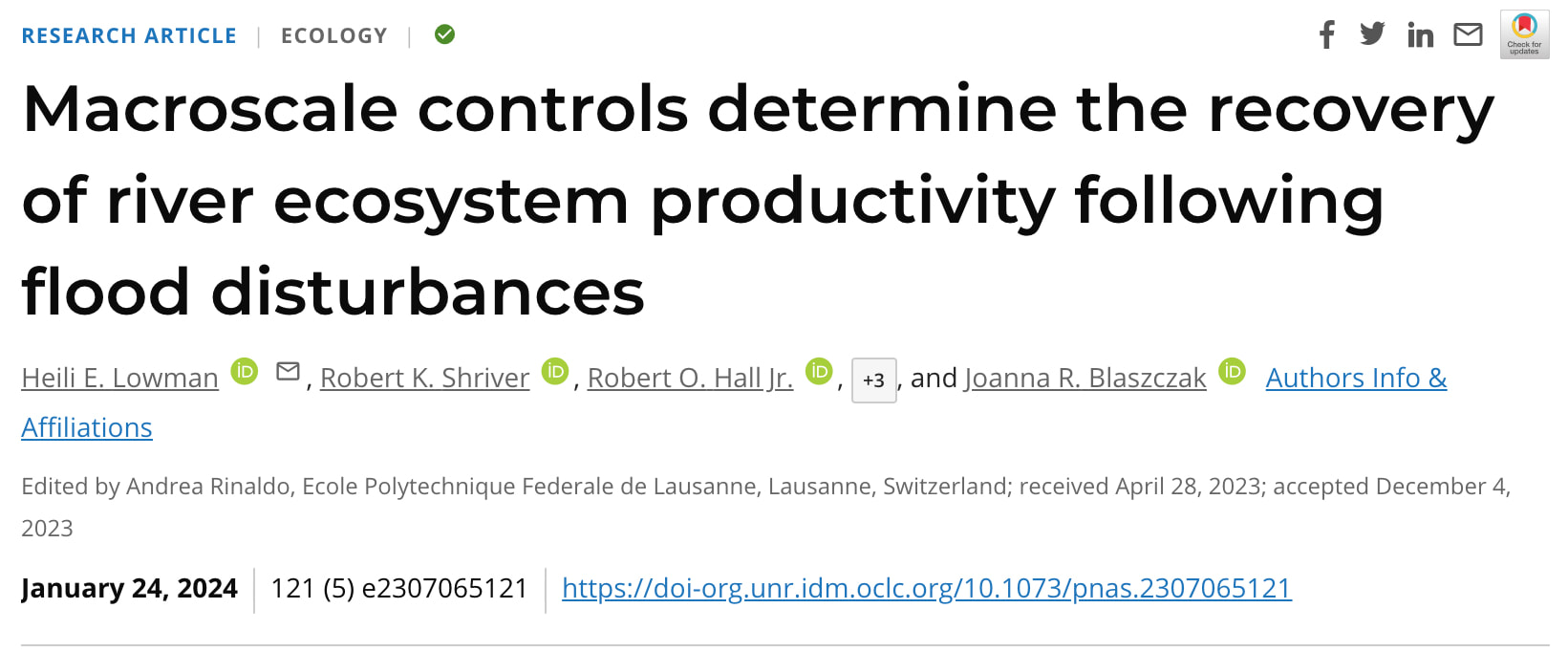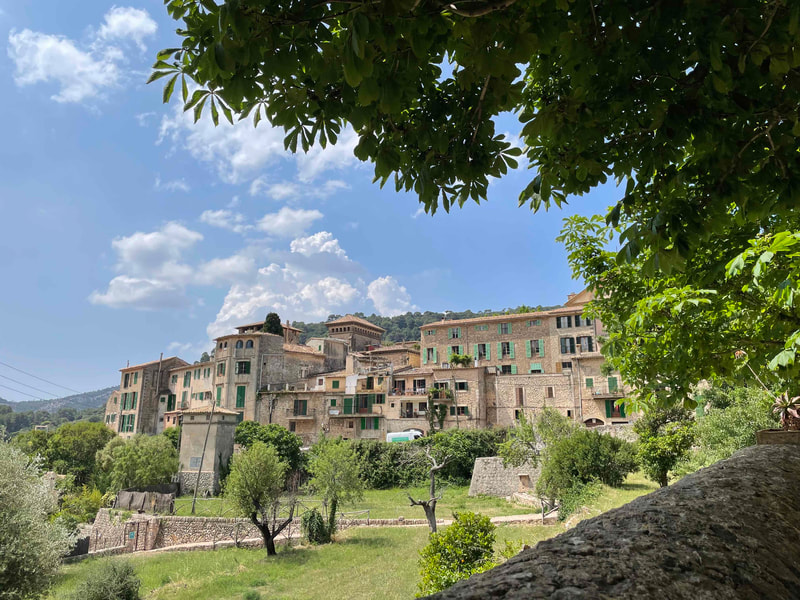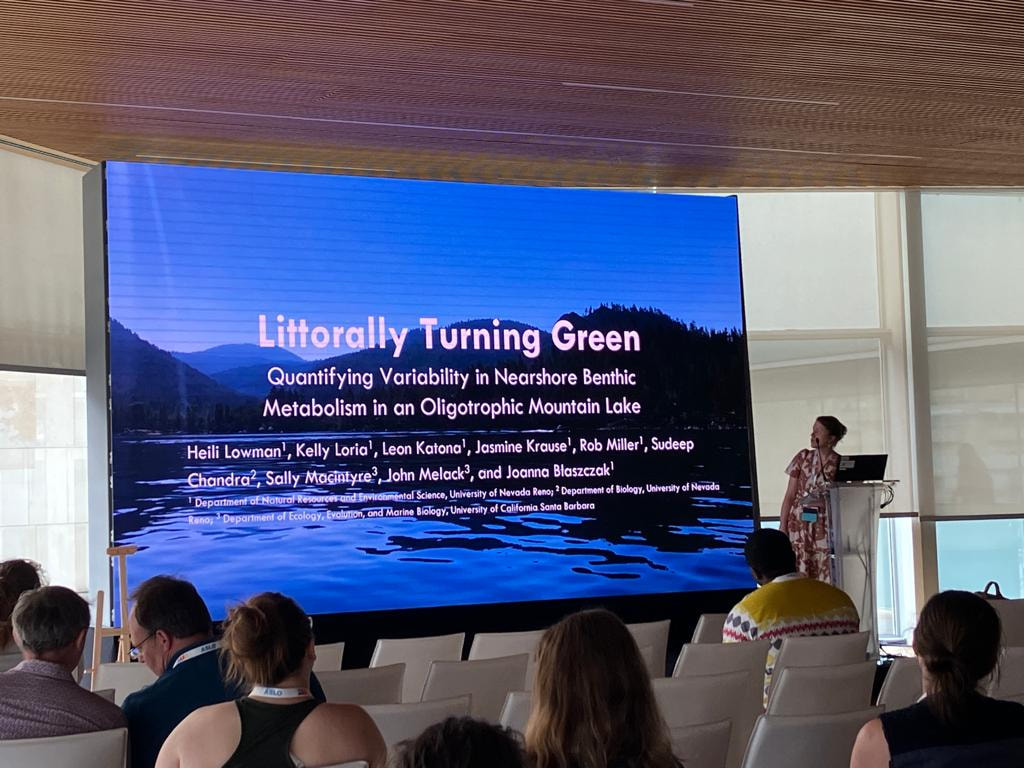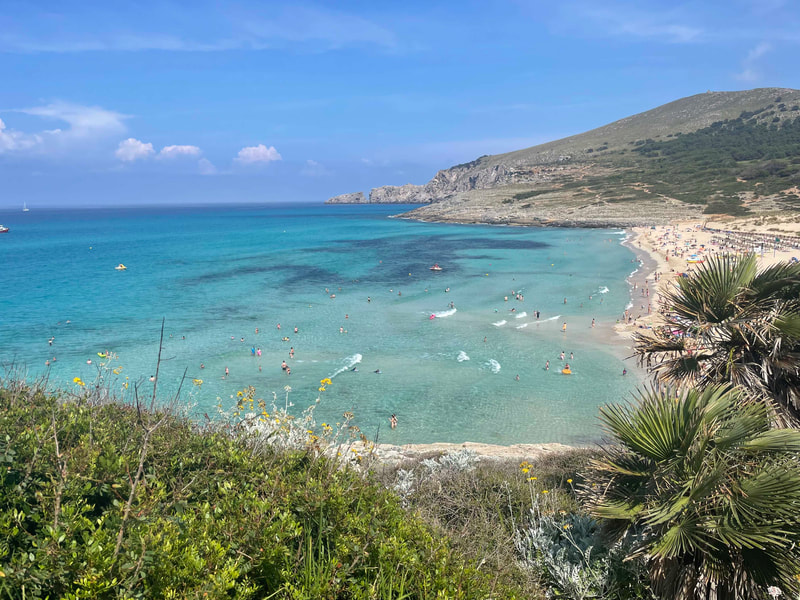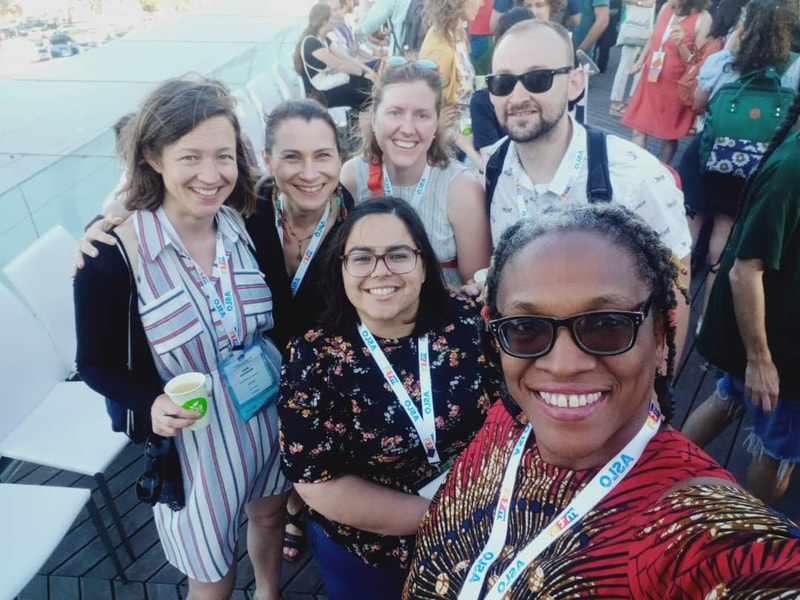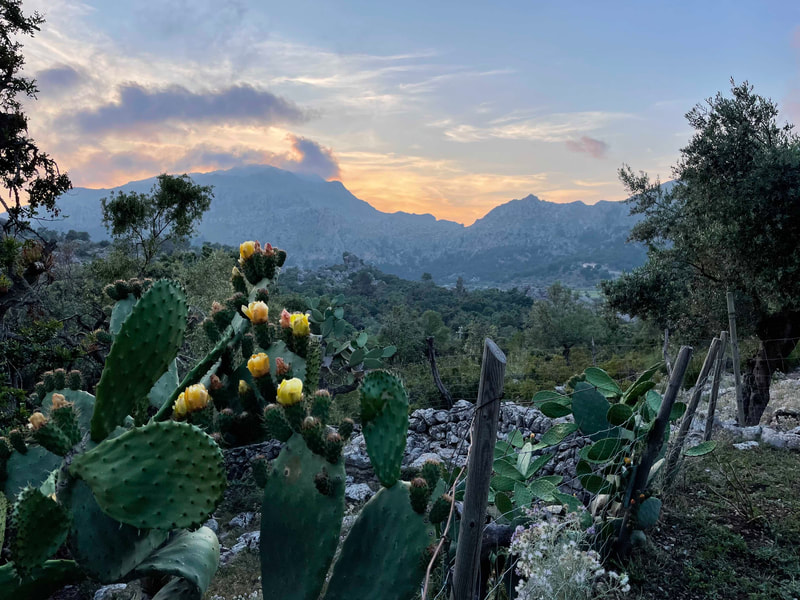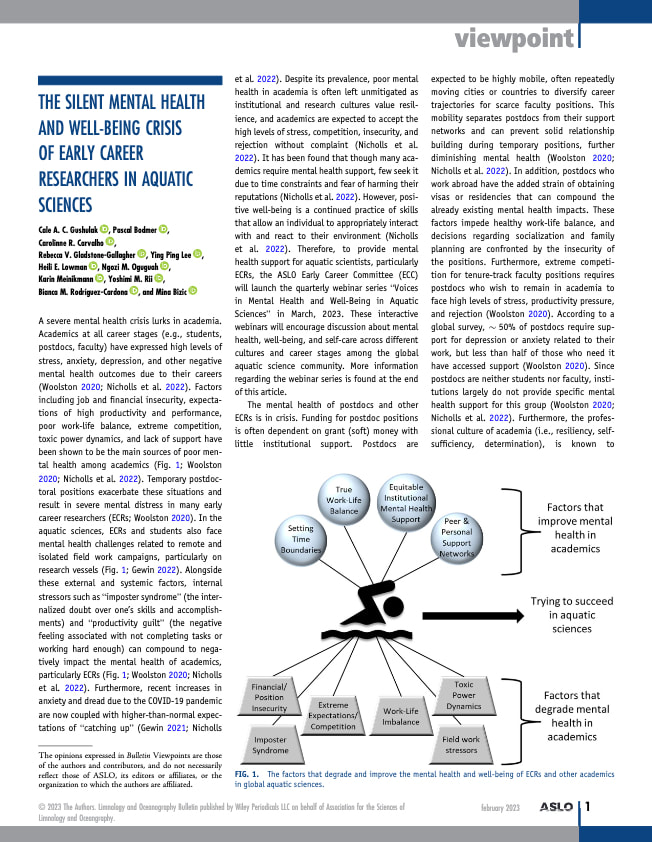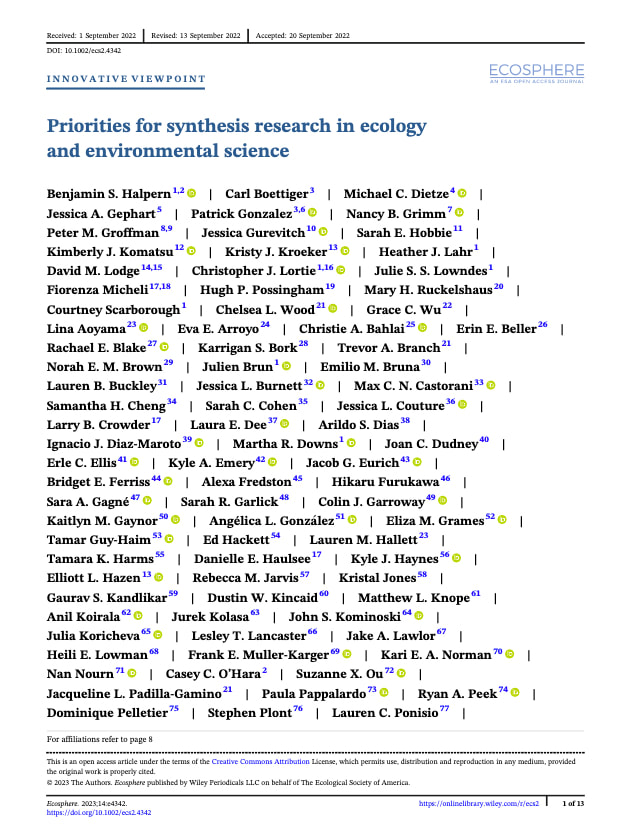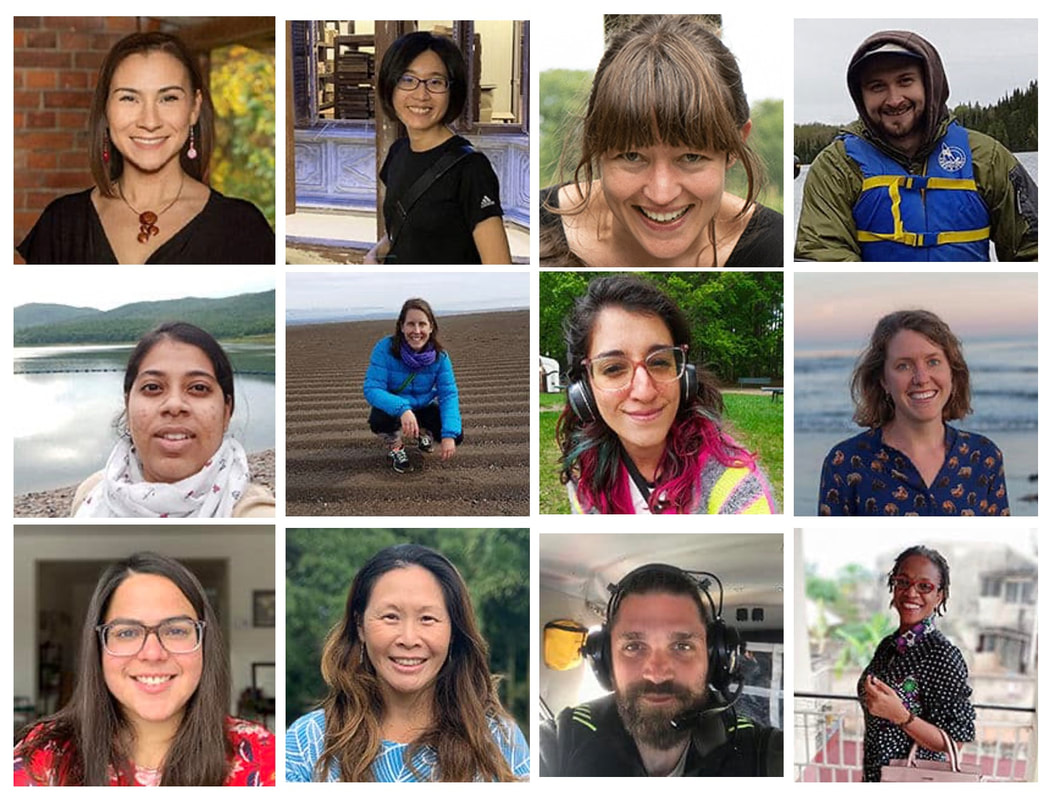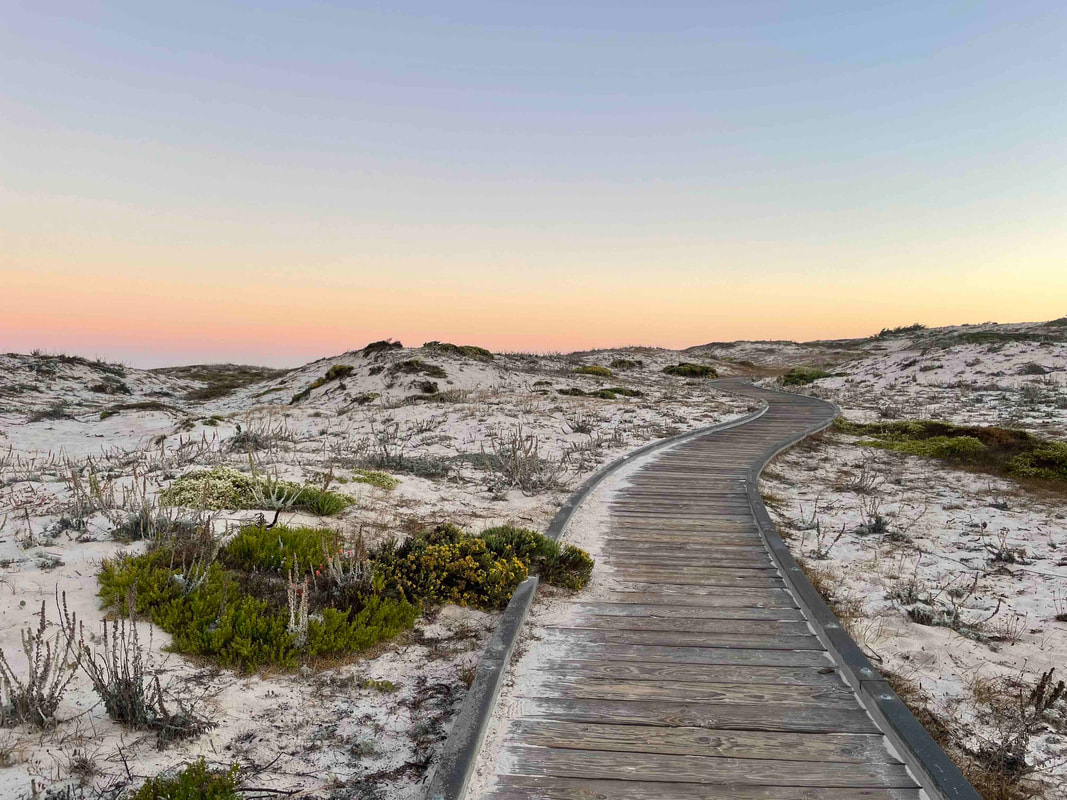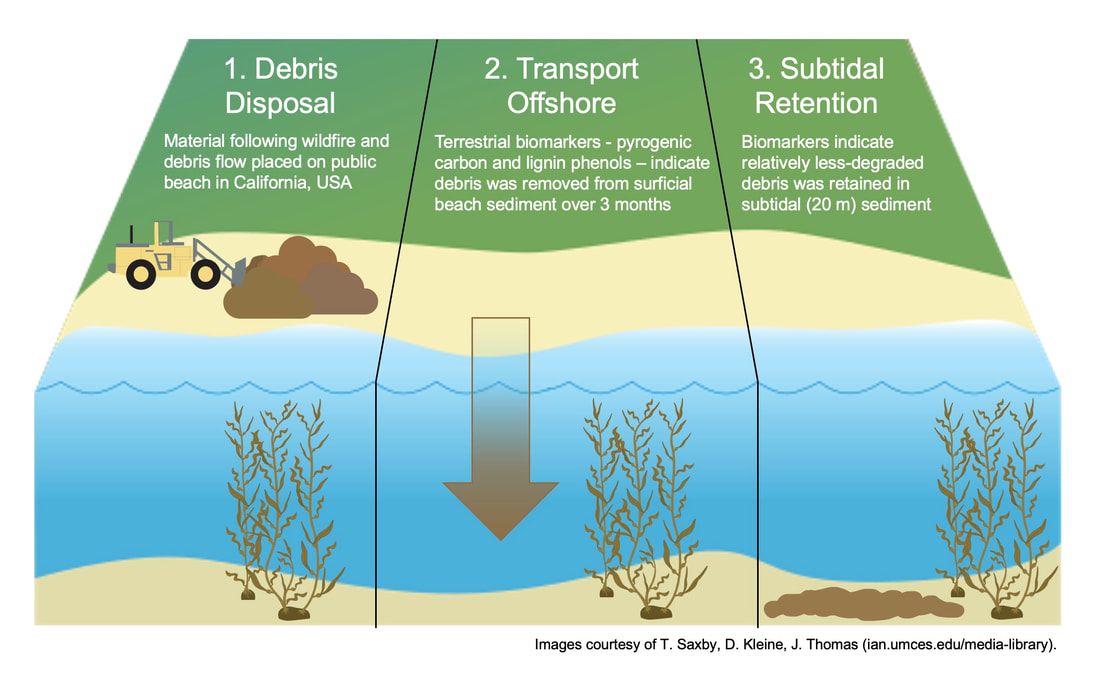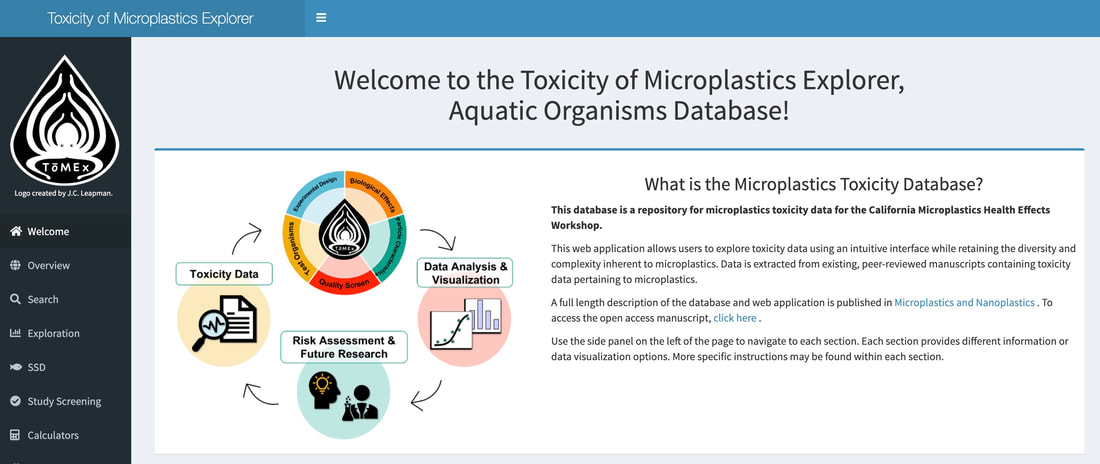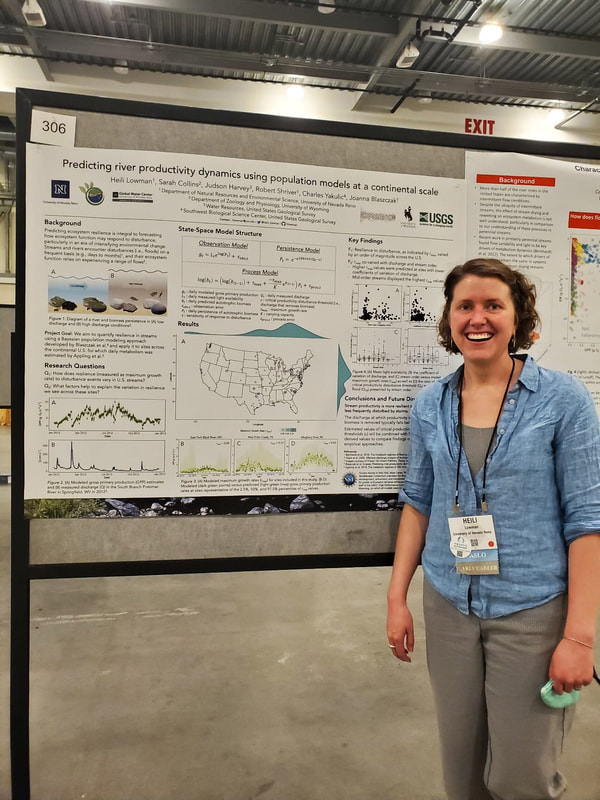|
Just last month, our work examining the recovery of river productivity following disturbance was published in the Proceedings of the National Academy of Sciences. This study took advantage of high-frequency, long-term river metabolism data (Appling et al., 2018) and used a novel modeling approach to estimate algal biomass in rivers (Blaszczak et al. 2023), because this data is otherwise incredibly difficult to collect at such high spatial and temporal resolution. We examined macroscale controls of the recovery of riverine algae and aquatic plants following flood disturbance to help inform future recovery predictions as flow regimes change due to climate change and anthropogenic activities.
Across 143 rivers, we found that the recovery times estimated by this modeling approach (median = 7.3 days) were biologically reasonable compared with studies performed in the field. We also found recovery was fastest in wide rivers, rivers with less influence from upstream dams, and river with more frequent instances of flow disturbance. We also found the disturbance thresholds required to affect productivity showed no relationship with macroscale factors, suggesting that they are instead site-specific and may be due to geomorphological factors such as grain size. I'd like to thank my fantastic co-authors Joanna Blaszczak, Bob Shriver, Bob Hall, Jud Harvey, Phil Savoy, and Charles Yackulic for their assistance on this project. If you are interested, code and related datasets are also published on Zenodo. Please do not hesitate to reach out to me directly if you would like to use this model in your own work and/or would like to discuss the approach further!
0 Comments
It's been a whirlwind summer filled with lots of great travel and meeting up with collaborators!
In May, I co-led a workshop at the National Center for Ecological Analysis and Synthesis in Santa Barbara, California with Tamara Harms (University of Alaska, Fairbanks) focused on examining the effects of wildfire on stream chemistry in aridland catchments. The group included members of the Collaborative for Research on Aridland Stream Systems from five universities, and we had an incredibly productive week of brainstorming, discussions, and field trips - stay tuned for our forthcoming publications! In June, I presented my research examining nearshore productivity dynamics in Lake Tahoe at the Aquatic Sciences Meeting in Palma de Mallorca, Spain. I also served as a meeting mentor with the Association for the Sciences of Limnology and Oceanography (ASLO) Multicultural Program and helped with a number of events focused on networking, grant writing, and mental health organized by ASLO's Early Career Committee. In August, I attended the annual Modelscape Consortium collaborators meeting at Flathead Lake Biological Station in Polson, Montana. The meeting was a wonderful opportunity to meet with remote collaborators and make progress on group-wide projects focused on innovative modeling approaches. Happy 2023! This year is off to a wonderful start as two highly collaborative efforts I was a part of have just been published. First, the ASLO Early Career Committee has put out a piece in Limnology & Oceanography Bulletin describing the challenges unique to early career aquatic scientists and solicits input from the larger community ahead of our new Voices in Mental Health webinar series launching in March 2023. Also, a manuscript based on the outcomes of a virtual workshop hosted by the National Center for Ecological Analysis and Synthesis and focused on identifying future directions for ecological synthesis efforts was just released in Ecosphere. Both articles are available open access!!
I am excited to announce that as of this fall, I am officially a member of the Association for the Sciences of Limnology and Oceanography's Early Career Committee! The purpose of this committee is to support and create a sense of community for early career researchers in the aquatic sciences across the globe. One of our current programs is the Amplifying Voices seminar series, which highlights research from underrepresented groups in the aquatic sciences. More information about the webinar series (hosted monthly) can be found here, and if you would like to nominate yourself or a colleague to speak as part of the series, the application form to present can be found here. We will also be hosting a range of events at the upcoming ASLO meeting in Palma, Spain in June 2023, so stay tuned for more information about those programs!
This week I had the opportunity to present at the 3rd annual Incorporating Data Science and Open Science in Aquatic Research summit as part of their session focused on data intensive models. I was so excited to be invited to present, and the organizers did a fabulous job of making the virtual space accessible and welcoming for all of the participants. If you are interested, a recording of my talk can be accessed on YouTube at the link below:
I'm excited to announce that not one, but two publications I was a part of while working at the Southern California Coastal Water Research Project were recently published! The first manuscript develops prioritization tools for the management of California watersheds using StreamCat, environmental justice, and bioassessment datasets and presents their application at a number of pilot sites throughout the state. The second manuscript presents a newly developed interactive database - the Toxicity of Microplastics Explorer (ToMEx) - for helping synthesize the recent explosion in microplastics toxicity data. Both the aquatic organism and human health effect versions of the dashboard are live and publicly available!
|
AuthorI am a Postdoctoral Associate in the Department of Biology at Duke University. Archives
February 2024
Categories
All
|
